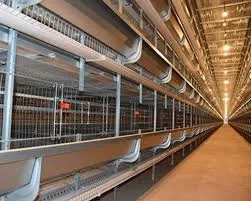chicken scalder
Nov . 15, 2024 02:45 Back to list
chicken scalder
The Process and Importance of Chicken Scalder in Poultry Processing
In the poultry processing industry, the term scalder refers to a crucial piece of equipment used in the preparation of chickens for further processing. This method, vital for maintaining the quality and hygiene of the meat, involves immersing chickens in hot water to facilitate feather removal and enhance the overall cleanliness of the birds. The process, though seemingly straightforward, plays a pivotal role in ensuring that poultry products meet health standards and consumer expectations.
Understanding the Scalder
A chicken scalder works by heating water to a specific temperature, typically between 140°F to 160°F (60°C to 71°C), into which the freshly slaughtered birds are dipped. The heat causes the feathers, skin, and other debris to loosen, allowing for easier removal. The duration of immersion in the scalder is critical; it must be long enough to achieve the desired results without cooking the meat, which can adversely affect quality and lead to flavor degradation.
There are various types of scalders, including batch scalder systems and continuous scalder systems. Batch scalders handle a specific number of chickens at a time, while continuous systems allow for a steady flow of birds entering and exiting, which improves efficiency in high-volume operations. The choice of system often depends on the scale of the processing facility and the volume of poultry being processed.
The Importance of the Scalding Process
The scalding process serves several important functions beyond just feather removal. Firstly, it helps to sanitize the birds' surfaces, as the hot water reduces the microbial load associated with poultry. This is essential in reducing the risk of bacterial contamination, such as Salmonella or Campylobacter, which can otherwise pose serious health risks to consumers.
chicken scalder

Secondly, scalding improves the overall quality and texture of the chicken meat. Properly scalded birds exhibit a better skin texture and retain moisture more effectively during cooking. Additionally, by facilitating feather removal, the scalder ensures that the birds are presented cleanly, which is vital for both consumer appeal and regulatory compliance.
Moreover, the water used in the scalder must be maintained at specific temperatures and must also be regularly treated to prevent contamination and buildup of biological material. Facilities need to implement stringent water management practices, including filtration and disinfection, to ensure that the scalder operates efficiently and effectively.
Challenges and Innovations in Scalder Technology
With advancements in technology, modern scalder systems have become increasingly sophisticated. Innovations such as automated temperature control, continuous monitoring of water quality, and energy-efficient heating solutions have greatly improved the efficiency and effectiveness of the scalder process. Furthermore, some facilities are exploring the use of steam scalding as an alternative method. Steam can provide a more effective and less damaging approach to feather removal while also enhancing the hygienic quality of the product.
However, challenges remain in optimizing the scalder operation. Balancing the need for effective feather removal with the preservation of meat quality requires ongoing research and development. Additionally, environmental considerations, such as water usage and waste management, are increasingly influencing the design and operation of these systems.
Conclusion
In summary, the chicken scalder is a fundamental component of the poultry processing industry, playing a critical role in ensuring that chicken products are safe, high-quality, and appealing to consumers. Understanding the intricacies of this process can help industry professionals make informed decisions regarding equipment, procedures, and innovations. As the industry continues to evolve, the importance of effective and efficient scalding processes will remain at the forefront of poultry processing practices. By prioritizing hygiene, quality, and sustainability, the industry can better serve the needs of consumers while maintaining high standards for public health and safety.
-
Hot Sale 24 & 18 Door Rabbit Cages - Premium Breeding Solutions
NewsJul.25,2025
-
Automatic Feeding Line System Pan Feeder Nipple Drinker - Anping County Yize Metal Products Co., Ltd.
NewsJul.21,2025
-
Automatic Feeding Line System Pan Feeder Nipple Drinker - Anping County Yize Metal Products Co., Ltd.
NewsJul.21,2025
-
Automatic Feeding Line System - Anping Yize | Precision & Nipple
NewsJul.21,2025
-
Automatic Feeding Line System - Anping Yize | Precision & Nipple
NewsJul.21,2025
-
Automatic Feeding Line System-Anping County Yize Metal Products Co., Ltd.|Efficient Feed Distribution&Customized Animal Farming Solutions
NewsJul.21,2025






